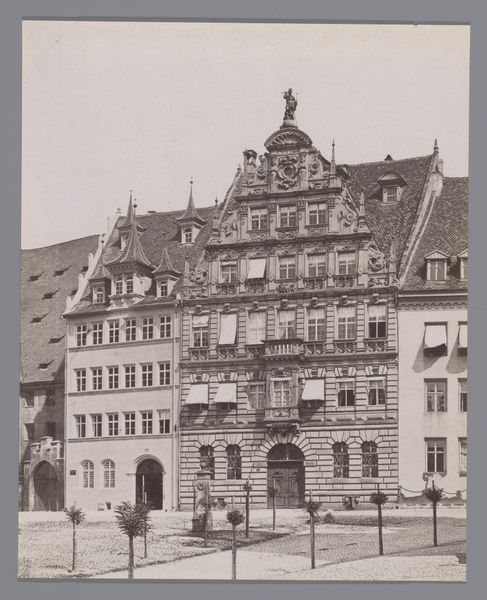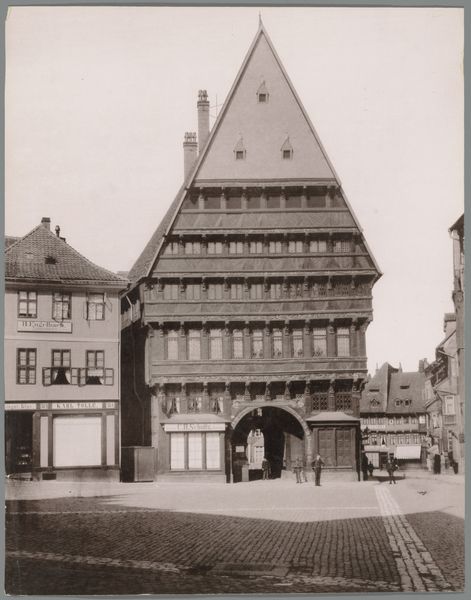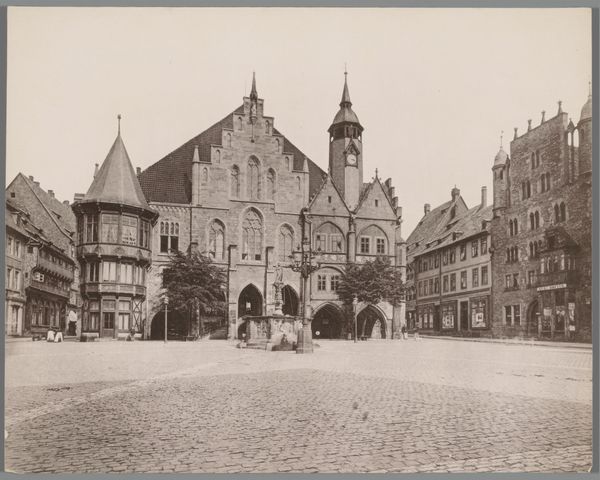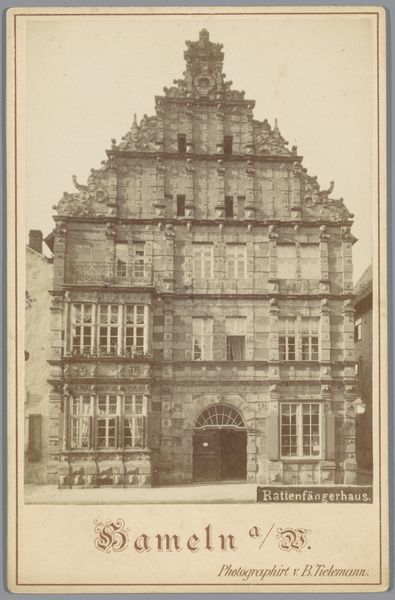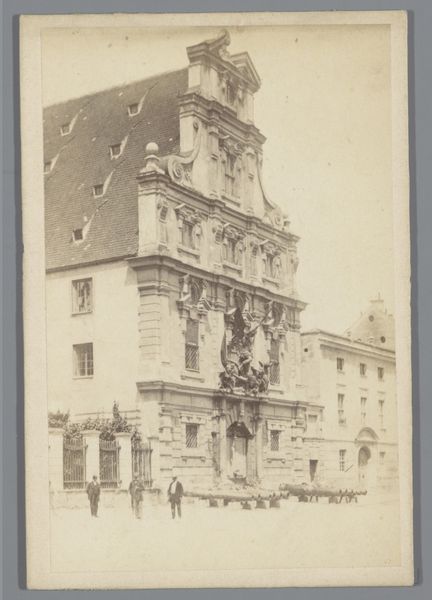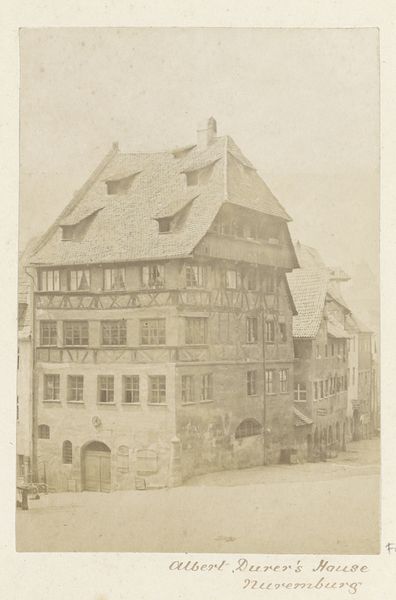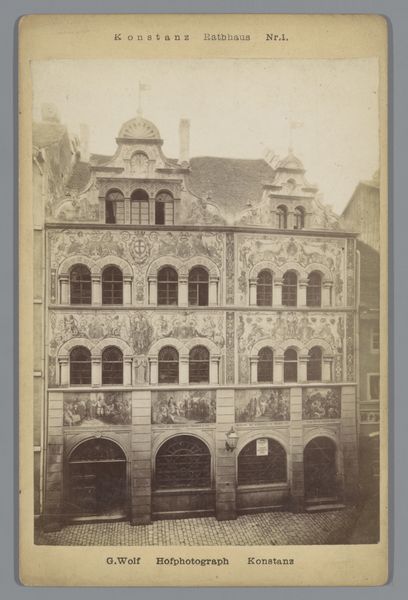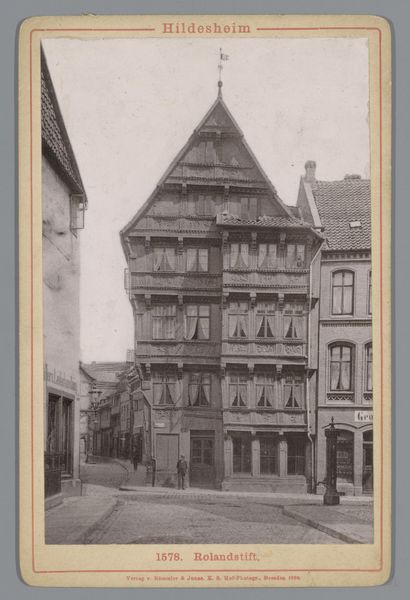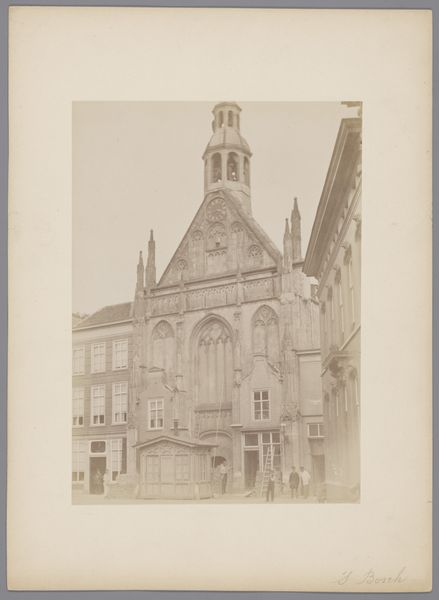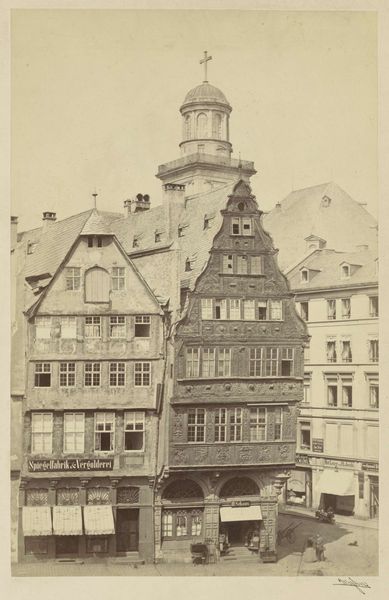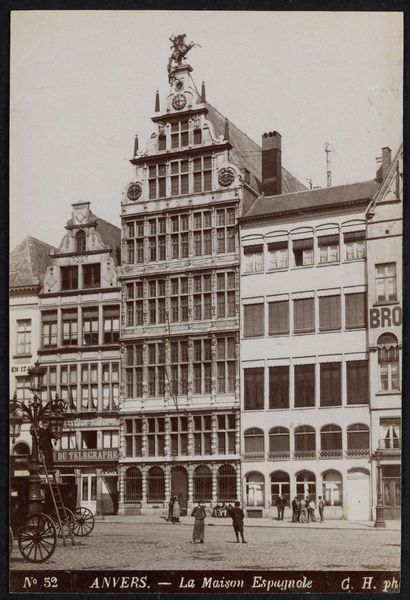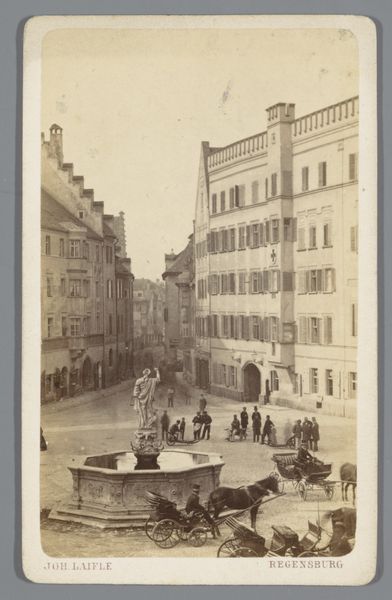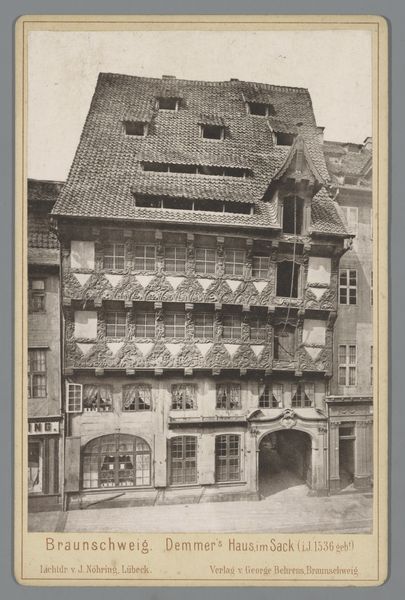
albumen-print, paper, photography, albumen-print, architecture
#
albumen-print
#
16_19th-century
#
paper
#
photography
#
cityscape
#
albumen-print
#
architecture
#
realism
Copyright: Public Domain
Editor: Here we have "Basel City Hall," a photograph dating from around 1890, an albumen print on paper by A. Varady & Comp. The sepia tones give the image a nostalgic feeling, and it presents a very solid, almost austere façade of civic power. What strikes you about this image? Curator: This photograph isn't just a record of a building; it’s a statement about power and its relationship to the citizenry. The City Hall, rendered in this albumen print, appears monumental, almost unapproachable, wouldn't you agree? Editor: Yes, definitely. It seems very imposing, and separate from the people in front of it. Curator: Precisely. Think about the historical context. Late 19th-century Europe was a hotbed of social and political change, with burgeoning capitalist economies existing alongside deeply entrenched social hierarchies. This photograph, through its architectural subject, unconsciously presents the civic structure as a potential symbol of control. Note the architectural details chosen by the photographers - are they glorifying municipal authority? What’s the effect of choosing to frame it this way, considering questions of access and equity at that moment in history? Editor: I hadn't thought of it that way. Seeing it now, I understand that architectural photography is far from apolitical. The photograph presents it as formidable and distinct from the daily life around it. Curator: Exactly! Photography, like architecture, reflects and reinforces social ideologies, whether intentionally or not. Examining historical works allows us a window into their underlying power dynamics. Editor: This gives me a whole new way of looking at architectural photography. Thank you! Curator: And it offers critical awareness of the visual and political languages still circulating today. Thank you.
Comments
No comments
Be the first to comment and join the conversation on the ultimate creative platform.
